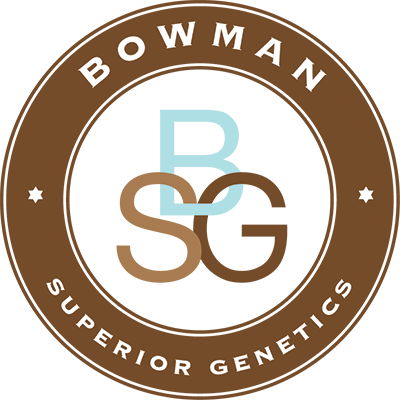By Marty Ropp
If you are among the many out there who feel as if it is becoming more difficult to identify the genetics you need to move forward
and make more profit, hopefully the following words will be of help. There is little doubt that the amount of information that is
presented to bull buyers these days can get a tick much to evaluate thoroughly, especially when you only use that information a
couple of days each year. The good news is that if you are becoming overwhelmed by the sheer quantity of data presented at bull
buying time, then your genetic supplier is collecting and using the most up to date tools to improve the genetics you are hoping
to benefit from. That is absolutely their job! Part of their responsibility then is also to present that information in an easy to use
fashion and help provide service, answers to your questions and even education regarding the data they present.
Here are a few simple tips to make your decisions at bull buying time a little easier.
1. Where you buy and who you buy from is as important as which bulls you purchase. Reputation, warrantee, genetic program,
service options and proper bull development are all crucial to consider before you choose where to purchase. If a breeder is doing
a great job improving their genetic product year after year, your herd will absolutely move in the same direction as theirs almost
regardless of which bulls you choose to use. Unfortunately the opposite is also the case. Therefore, the last bull in the sale still
has to offer genetic improvement or they shouldn’t be selling it to their customers. So buy from folks who offer value from top to
bottom, coupled with great service and you won’t make mistakes.
2. Prioritize EPDs over raw data. EPDs are simply the best estimate available of a young bull’s value. I know it is hard to break
old habits, but the predictive value of a Weaning Weight EPD is so much better than the calf’s actual weaning weight it is not even
funny. These EPDs consider the genetics of every ancestor, the actual weight comparisons of the calf crop and even the DNA
information in some cases. That is a lot of good stuff in one number, so just cross off the raw weights…if you can.
3. Use the indexes to simplify your decision making. Most breeds now offer $Value indexes to help you choose genetics.
Choose the right index [Shorthorn: $British Maternal Index, $Feedlot, etc.] and these values can be a great guide to getting in the right pen of bulls for
your program. If you are unsure of the “best” index values to look at, ask your genetic supplier or professional for help. Once you
choose which index to rank your choices, go out into that group of bulls and pick the ones you prefer for soundness, muscling,
disposition, testicle size and all of the other traits you need in your operation. Don’t misunderstand, I would never say the highest
$ value index bull is absolutely the best bull, but choosing from the bulls that offer leading or above average profit potential just
makes good sense. Avoid bulls with poor index values, no matter how good they might look to avoid the big genetic wrecks down
the line.
4. Ask for assistance. Most of us would never buy a combine, seed, feed or fertilizer without being fully educated or employing
expertise in the process. Genetic decisions too have long term profit implications. Your genetic supplier is absolutely supposed
to be your partner in this process. Get their input when you can or work with someone who makes genetic decisions every day to
leverage their experience and expertise in the process. Genetics are becoming higher priced, so make an extra effort to take home
great value for your investment.
